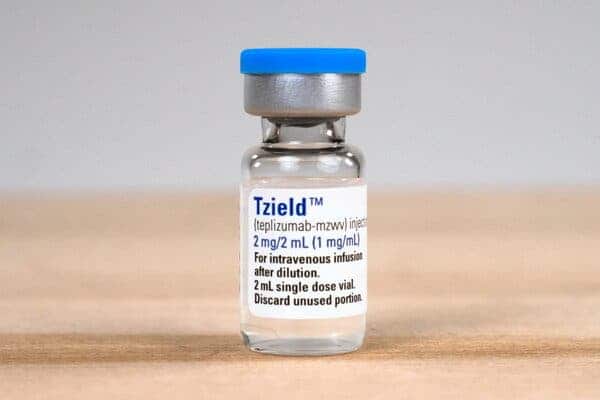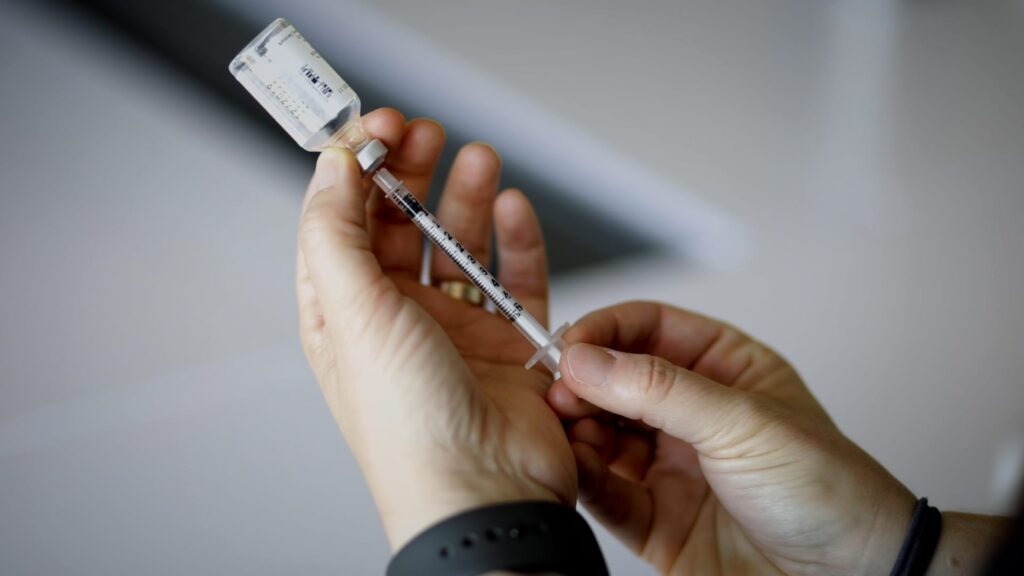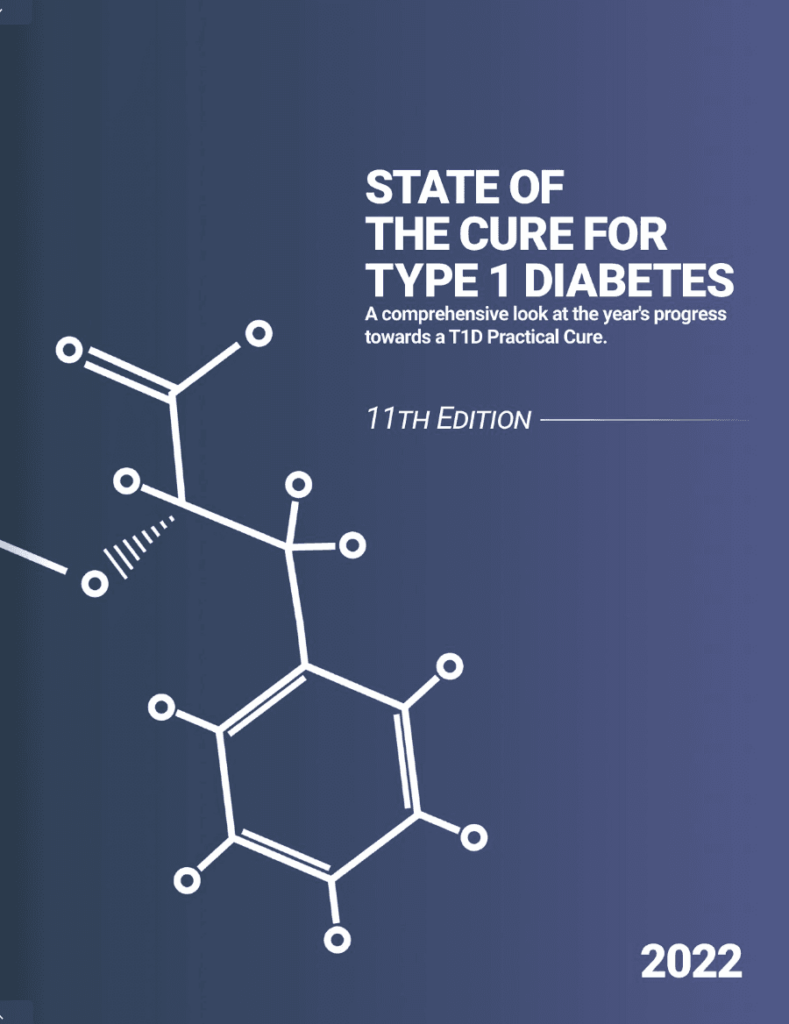Imagine a future where the burden of managing type 1 diabetes is a thing of the past. Picture a world where individuals with this condition no longer have to constantly monitor their blood sugar levels or endure daily insulin injections. Well, this vision may not be too far off in the distance. Scientists and researchers all over the globe are tirelessly working towards finding a cure for type 1 diabetes by the year 2022. This breakthrough could revolutionize the lives of millions and bring hope to those currently living with this chronic illness. Get ready to step into a future where type 1 diabetes is a thing of the past.

Overview of Type 1 Diabetes
What is Type 1 Diabetes?
Type 1 diabetes, also known as juvenile diabetes or insulin-dependent diabetes, is a chronic autoimmune disease that occurs when the body’s immune system mistakenly attacks and destroys the insulin-producing cells in the pancreas. Insulin is a hormone that helps regulate blood sugar levels, allowing glucose to enter the cells and provide them with energy. Without enough insulin, blood sugar levels can become dangerously high, leading to a wide range of symptoms and long-term complications if not properly managed.
Causes of Type 1 Diabetes
The exact cause of type 1 diabetes is still unknown, although it is believed to involve both genetic and environmental factors. Certain genes are associated with an increased risk of developing type 1 diabetes, but they do not guarantee the development of the disease. Environmental triggers, such as viral infections or exposure to certain toxins, may play a role in triggering the autoimmune response that leads to the destruction of insulin-producing cells.
Symptoms of Type 1 Diabetes
The symptoms of type 1 diabetes can develop suddenly and may include excessive thirst and urination, unexplained weight loss, fatigue, blurred vision, frequent infections, and slow healing of wounds. If left untreated, type 1 diabetes can progress to a life-threatening condition called diabetic ketoacidosis, characterized by the buildup of toxic acids called ketones in the blood. It is important to recognize these symptoms and seek prompt medical attention to avoid complications.
Current Treatment for Type 1 Diabetes
Insulin Therapy
Insulin therapy is the cornerstone of treatment for type 1 diabetes. It involves replacing the missing or insufficient insulin through injections or the use of an insulin pump. Different types of insulin are available, including long-acting, rapid-acting, and intermediate-acting insulin, which are used in combination to mimic the body’s natural insulin production. Regular monitoring of blood sugar levels is necessary to adjust insulin doses and maintain optimal control.
Continuous Glucose Monitoring
Continuous glucose monitoring (CGM) is a technology that allows individuals with type 1 diabetes to track their blood sugar levels in real-time. CGM systems consist of a tiny sensor inserted under the skin, which measures glucose levels in the interstitial fluid. The data is transmitted to a receiver or smartphone, providing valuable insights into glucose trends and helping to prevent highs and lows. CGM has revolutionized diabetes management, enhancing glycemic control and reducing the risk of complications.
Pancreas Transplant
For select individuals with type 1 diabetes and severe complications, a pancreas transplant may be a treatment option. During this procedure, a healthy pancreas from a deceased donor is surgically implanted into the recipient’s abdomen. A successful pancreas transplant can restore the body’s ability to produce insulin and eliminate the need for external insulin therapy. However, pancreas transplants are complex surgeries with significant risks and require lifelong immunosuppressive medications.
Islet Cell Transplantation
Islet cell transplantation is a less invasive alternative to pancreas transplantation. It involves isolating insulin-producing islet cells from a deceased donor’s pancreas and transplanting them into the recipient’s liver. The transplanted cells can then release insulin and regulate blood sugar levels. Islet cell transplantation has shown promising results in achieving insulin independence in some individuals, but it is still considered an experimental procedure and is limited by the availability of donor islet cells.
Challenges in Finding a Cure for Type 1 Diabetes
Autoimmune Response
One of the major challenges in finding a cure for type 1 diabetes is the autoimmune response that causes the destruction of insulin-producing cells. The immune system is designed to protect the body from harmful invaders, but in the case of type 1 diabetes, it mistakenly attacks its own cells. Scientists are working to better understand the underlying mechanisms of this autoimmune response and develop strategies to prevent or reverse it.
Difficulty in Identifying the Exact Cause
Another challenge is the difficulty in identifying the exact cause of type 1 diabetes. While genetic predisposition plays a role, it is not the sole determinant, as not all individuals with the associated genes develop the disease. Environmental factors are also believed to contribute, but pinpointing the specific triggers is a complex task. Research efforts are focused on unraveling the complex interactions between genetics, environment, and immune responses to gain a clearer understanding of the disease’s origins.
Ethical Considerations
Ethical considerations are another hurdle in the search for a cure. Human experimentation is tightly regulated to ensure the safety and well-being of participants. Clinical trials involving potentially curative treatments for type 1 diabetes must adhere to strict ethical guidelines to protect the rights and health of the patients. Balancing the need for scientific progress with patient safety is an ongoing challenge in advancing towards a cure.
Financial Constraints
Research and development of new treatments for type 1 diabetes require substantial funding. Securing financial support for scientific studies, clinical trials, and technological advancements can be a challenge. Without adequate funding, progress towards finding a cure may be slowed or hindered. Raising awareness about the importance of funding and advocating for increased investment in research is vital to overcome this obstacle.
Emerging Technologies for Type 1 Diabetes Cure
Artificial Pancreas
An artificial pancreas, also known as a closed-loop system, is a technology that combines insulin pumps with continuous glucose monitors to automate insulin delivery. It mimics the function of a healthy pancreas by constantly monitoring glucose levels and adjusting insulin doses accordingly. This promising technology has the potential to improve glucose control and reduce the burden of diabetes management for individuals with type 1 diabetes.
Beta Cell Replacement
Beta cell replacement therapy seeks to replace the destroyed insulin-producing cells with healthy cells that can produce and release insulin. Different approaches are being explored, including the transplantation of donor islet cells, the use of stem cells to generate new beta cells, and the genetic reprogramming of existing non-beta cells to become insulin-producing cells. Beta cell replacement therapies aim to restore natural insulin production and eliminate the need for exogenous insulin.
Gene Therapy
Gene therapy is a cutting-edge field that holds promise for treating a wide range of diseases, including type 1 diabetes. It involves introducing genes into cells to correct genetic abnormalities or enhance their function. In the context of type 1 diabetes, gene therapy aims to modify immune cells to prevent the destruction of insulin-producing cells or introduce genes that enable non-beta cells to produce insulin. While still in the early stages of development, gene therapy has shown potential in animal studies and holds great promise for the future.
Stem Cell Therapy
Stem cell therapy harnesses the regenerative potential of stem cells to restore beta cell function in individuals with type 1 diabetes. Different types of stem cells are being investigated, including embryonic stem cells, induced pluripotent stem cells, and adult stem cells. The goal is to differentiate these stem cells into functional beta cells that can replace the damaged or destroyed ones. Although substantial challenges still need to be addressed, stem cell therapy offers a promising avenue towards a cure for type 1 diabetes.

Tenacity of Researchers
Collaboration and Information Sharing
Researchers studying type 1 diabetes cure tirelessly collaborate and share information to accelerate progress. Collaborative efforts between scientists, healthcare professionals, and organizations have fostered a rich exchange of knowledge, speeding up the development of potential treatments. Open-source platforms and global networks allow researchers to pool their expertise and resources, leading to more efficient research and increased potential for breakthroughs.
Increasing Funding for Research
The dedicated researchers searching for a cure for type 1 diabetes rely heavily on funding to sustain their work. Advocacy groups, government agencies, and philanthropic organizations play a critical role in providing financial support for research initiatives. Continued efforts to secure increased funding for type 1 diabetes research are essential to drive innovation and propel scientific discoveries towards clinical application.
Animal Studies and Clinical Trials
Animal studies and clinical trials are fundamental in advancing research towards a cure for type 1 diabetes. These studies allow researchers to test the safety and effectiveness of new treatments in controlled settings before introducing them to human patients. By meticulously examining the outcomes and side effects of experimental interventions, researchers can refine their approaches and determine the most promising avenues for therapeutic development.
Promising Research and Clinical Trials
Encapsulation
Encapsulation involves embedding insulin-producing cells in a protective barrier to shield them from immune attack while allowing the passage of insulin and nutrients. This approach aims to create an environment where transplanted cells can thrive without being destroyed by the immune system. Encapsulation shows promise in providing long-term insulin independence and reducing the need for immunosuppressive medications.
Immunotherapy
Immunotherapy aims to modulate and restore immune function to halt the destruction of insulin-producing cells. Different strategies are being explored, including the use of immune modulators, regulatory T cells, and antigen-specific therapies. By re-educating the immune system to recognize insulin-producing cells as friend rather than foe, immunotherapy holds great potential in preventing or reversing the autoimmune process underlying type 1 diabetes.
Nanotechnology
Nanotechnology involves the manipulation of materials or devices on an atomic or molecular scale. In the context of type 1 diabetes, nanotechnology offers the possibility of targeted drug delivery systems, improved glucose sensors, and advanced methods of cell encapsulation. By harnessing the unique properties of nanomaterials, researchers can develop innovative approaches to enhance the efficacy and safety of diabetes treatments.
Beta Cell Regeneration
Beta cell regeneration aims to stimulate the regrowth or replication of new insulin-producing cells within the pancreas. Researchers are exploring various approaches to trigger the natural regeneration mechanisms, such as promoting the replication of existing beta cells or inducing the differentiation of progenitor cells into functional beta cells. Successful beta cell regeneration would represent a significant step towards a cure for type 1 diabetes.
Microbiota Manipulation
Emerging evidence suggests that the gut microbiota plays a role in immune system regulation and metabolic processes, including glucose homeostasis. Researchers are investigating the potential benefits of manipulating the gut microbiota through probiotics, prebiotics, and fecal microbiota transplantation. By modulating the composition and activity of the gut microbiota, it might be possible to prevent or delay the onset of type 1 diabetes and improve glycemic control.

Potential Cures for Type 1 Diabetes by 2022
Artificial Pancreas as a Game-Changer
The development and refinement of the artificial pancreas technology hold tremendous promise for individuals with type 1 diabetes. As the technology advances and undergoes further clinical testing, it is expected to be more widely accessible by 2022, providing a significant breakthrough in diabetes management. The artificial pancreas has the potential to revolutionize the way people with type 1 diabetes manage their condition, improving quality of life and reducing the risk of complications.
Gene Therapy Breakthroughs
Gene therapy research in the field of type 1 diabetes has shown encouraging results in preclinical studies. The ability to modify immune cells or induce non-beta cells to produce insulin through genetic engineering represents a significant step towards a cure. With ongoing advancements and further clinical trials, gene therapy could potentially become a game-changer in the treatment of type 1 diabetes by 2022.
Beta Cell Replacement with Encapsulation
Encapsulation is a promising approach that could transform beta cell replacement therapy into a viable cure for type 1 diabetes. By protecting transplanted cells from immune attack, encapsulation allows for long-term insulin production without the need for immunosuppressive medications. If ongoing research successfully addresses the challenges associated with encapsulation, beta cell replacement therapy may become a curative option for individuals with type 1 diabetes within the next few years.
Improved Immunotherapies
The development of novel immunotherapies that target the underlying immune dysfunction in type 1 diabetes holds significant promise. By reprogramming the immune system or selectively inhibiting the autoimmune response, it may be possible to halt or reverse the destruction of insulin-producing cells. As researchers continue to refine immunotherapeutic approaches and conduct clinical trials, improved treatments may emerge, potentially leading to a cure for type 1 diabetes by 2022.
Implications and Benefits of a Cure
Improved Quality of Life
A cure for type 1 diabetes would have profound implications for the quality of life of individuals living with the disease. It would eliminate the need for daily insulin injections, constant blood sugar monitoring, and the stress of managing glucose levels. The freedom from the burdens of diabetes management would allow individuals to regain control of their lives, pursue their passions, and enjoy a more spontaneous and carefree existence.
Reduced Healthcare Costs
Type 1 diabetes is associated with significant healthcare costs, including frequent doctor visits, insulin therapy, and the treatment of complications. A cure for type 1 diabetes would reduce the financial burden on individuals, families, and healthcare systems. By eliminating or minimizing the long-term complications of the disease, such as kidney disease and cardiovascular problems, healthcare costs could be significantly reduced, ultimately benefiting both patients and society.
Prevention of Complications
Type 1 diabetes can lead to various complications, including nerve damage, vision loss, kidney disease, and cardiovascular problems. A cure for type 1 diabetes would prevent the onset of these complications, as it would restore normal insulin production and blood sugar control. By maintaining optimal glucose levels, the risk of long-term complications could be greatly reduced, allowing individuals to lead healthier and more fulfilling lives.
Psychological Impact
Living with type 1 diabetes can take a toll on a person’s mental and emotional well-being. The constant monitoring, strict dietary restrictions, and fear of hypoglycemic or hyperglycemic episodes can lead to stress, anxiety, and depression. A cure for type 1 diabetes would alleviate the emotional burden associated with the disease, improving mental health and overall well-being. The psychological impact of a cure cannot be underestimated, as it would offer relief and enhance the overall quality of life for individuals with type 1 diabetes.

Global Diabetes Organizations and Initiatives
Juvenile Diabetes Research Foundation (JDRF)
The Juvenile Diabetes Research Foundation (JDRF) is a leading global organization aimed at funding research to find a cure for type 1 diabetes. Through collaborations with academic institutions, government agencies, and industry partners, the JDRF supports innovative initiatives and clinical trials focused on advancing type 1 diabetes research. The JDRF also promotes awareness and advocates for policies that improve access to care and support for individuals living with the disease.
American Diabetes Association (ADA)
The American Diabetes Association (ADA) is a nonprofit organization dedicated to preventing and curing diabetes and improving the lives of all those affected by the disease. The ADA funds research grants, provides educational resources, and advocates for policies that promote diabetes prevention, management, and access to quality care. By raising awareness and supporting scientific advancements, the ADA plays a vital role in the fight against type 1 diabetes.
European Association for the Study of Diabetes (EASD)
The European Association for the Study of Diabetes (EASD) is a scientific organization focused on promoting research, education, and patient care in the field of diabetes. The EASD brings together scientists, clinicians, and healthcare professionals from across Europe to share knowledge, collaborate, and advance research towards finding a cure for type 1 diabetes. Through conferences, publications, and educational initiatives, the EASD facilitates the exchange of ideas and fosters innovation in diabetes research.
Diabetes Research Institute (DRI)
The Diabetes Research Institute (DRI) is a state-of-the-art research facility dedicated to finding a cure for diabetes. The DRI focuses on regenerative medicine, immunotherapy, and personalized medicine approaches to tackle type 1 diabetes. The institute collaborates with leading scientists and clinicians worldwide to accelerate the translation of promising discoveries into clinical applications. The DRI’s multidisciplinary approach and innovative research strategies make it a beacon of hope for individuals living with type 1 diabetes.
Conclusion
The search for a cure for type 1 diabetes is a complex journey, but researchers around the world are making remarkable progress. Through advancements in technology, innovative therapies, and concerted collaborative efforts, the future looks hopeful for individuals living with type 1 diabetes. By addressing the challenges, harnessing emerging technologies, and increasing funding and support, a cure for type 1 diabetes may become a reality by 2022. The implications of a cure would extend far beyond improved health, bringing tremendous benefits to individuals, their families, and society as a whole. The future holds great promise for those affected by type 1 diabetes, offering hope for a life free from the burdens of this chronic disease.
